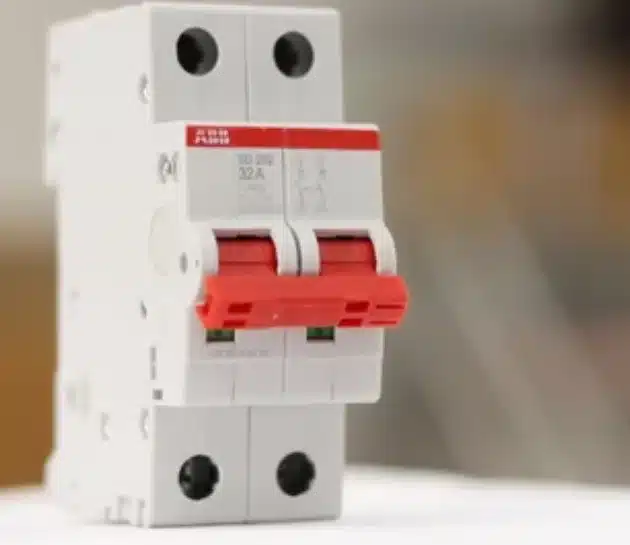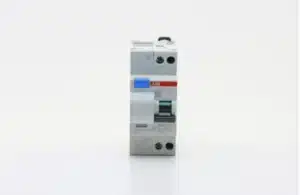I’ve seen firsthand how sudden fluctuations in power can ruin expensive equipment and appliances in both my home and business. That’s why protection through SPDs is so important. These devices detect and redirect surges, saving your valuable electronics from damage.
If you’ve ever questioned whether surge protectors are worth it, take the time to read, learn, and determine the right choice for your needs.
What is Surge Protectors
A surge can happen at any time, often during a lightning strike or due to a sudden variation in current. That’s why having a protector in place is crucial for your home’s electrical system. A surge protector works by detecting excess power and instantly redirecting it to the ground or a metal oxide varistor, preventing it from damaging your appliances and main wiring.
There are different types of protection available, including a power strip surge protector, which is plugged into outlets to safeguard connected devices, and a whole-house model that an electrician must install in the box to protect the entire home’s system from surges.
Related: If you need to learn what is a Surge Arrester?, check out this article.
Understanding the Functionality of Surge Protectors
If you live in a residential property, your home’s electrical flow usually runs at 120 volts. However, when a power surge happens, this balance is disrupted, potentially damaging your devices. That’s where SPDs come in. These surge protection devices work by monitoring current surges using a sensor called a metal oxide varistor (MOV).
The MOV automatically adjusts resistance depending on the voltage—if the voltage is low, it will increase resistance to stabilize the flow. If the level of the surge is too high, it will lower resistance and safely divert the excess current to the ground, preventing damage and ensuring everything keeps running consistent and smooth.
The key to choosing the right protectors is understanding their joule rating, which indicates how much current they can handle. Protectors with higher joule ratings can absorb more intense currents, making them ideal for heavy-duty use. Inside these protectors, MOVs contain metal oxide and semiconductors that constantly senses and adjust the electrical flow. To ensure they function properly and safely, regular maintenance checks are crucial. Without these checks, even the best protectors might fail, leaving your expensive gadgets vulnerable to an unexpected surge.
Pros and Cons of Surge Protection Devices
Pros
Why Surge Protectors Are Worth It
I remember the time when my friend’s expensive home theater system got fried due to a sudden power surge. It was a nightmare— the electrical damage was irreversible, and the repairing costs were just as costly as buying a new system. This is why having a surge protector is essential—it helps prevent such disasters and keeps your devices and appliances safe.
Some major advantages of utilizing surge protectors are listed below.
- Prevents Damage to Electrical Equipment
A power surge can ruin the wiring of your devices, making them useless. This can be especially devastating if you own high-end appliances or important office equipment. A good protector ensures that sudden voltage spikes don’t lead to immediate destruction. - Extends the Lifespan of Your Devices
Even if a power surge doesn’t immediately destroy your devices, it can still put stress on the wiring, causing it to degrade over time. This shortens the overall lifespan of your equipment, leading to more frequent replacing and repairing, which is both costly and inconvenient. - Affordable and Easy to Install
Not all protective solutions come with a hefty price tag. Power strip surge protectors are inexpensive and readily available at any store, whether locally or online. Installation is as easy as plugging the protector into an outlet and connecting your devices. For larger setups, businesses and homeowners often buy several to ensure complete protection. - Ideal for Homes and Businesses
Whether you’re safeguarding your home entertainment system or critical office equipment, a surge protector is a smart investment. Many homeowners and business owners buy protectors for multiple areas in their home or business to guarantee protection across different outlets.
Having used surge protectors in my own home, I can confidently say they provide peace of mind. The small investment far outweighs the risk of losing expensive appliances or dealing with inconvenient repairing and replacing costs.
Cons
Drawbacks of Surge Protectors
Surge protectors have limitations and may fail under higher voltages. Basic models can only handle slight fluctuations, but repeated exposure can cause them to wear out.
Not all protectors offer the same protection. Some handle minor surges, while more reliable ones are expensive but available. Over time, their effectiveness weakens, making replacement necessary.
Choosing the right protector is key—using the wrong one may not provide the needed safety.

Whole House Surge Protectors Can Be Costly
If you’re planning to safeguard your home, investing in a whole-house surge protector is a smart decision. However, the initial costs can be high, especially when you factor in the need to hire a trained electrician for installations. Attempting a do-it-yourself (DIY) install is strongly discouraged unless you’re professionally skilled in handling electrical parts.
While the upfront expense may seem steep, it’s a worthy investment that helps prevent costly repair or replace situations for your valuable appliances and equipment. Over time, the protection it offers far outweighs the expensive damages caused by power surges.
Types of Surge Protection Devices: A Complete Guide
When it comes to protecting valuable equipment and appliances from unexpected voltage spikes, choosing the right surge protection solution is crucial. Various devices are designed for different levels of electrical threats, ensuring the safety of your entire system. Let’s break down the three main types and how they function.
1. Type 1: The First Line of Defense
A Type 1 device is built to handle the most extreme threats, especially lightning strikes. It relies on spark-gap technology to divert excess voltage safely to the ground conductors before it reaches your building’s electrical system. If you live in an area prone to severe storms, installing a Type 1 protector at the service entrance is a smart move.
2. Type 2: Protecting Your Electrical System
A Type 2 device is your go-to solution for internal power fluctuations. These SPDs are designed to manage low voltages and moderate surges that can occur within the system due to normal usage or power grid disturbances. Ideal for residential and commercial use, this type ensures that all connected equipment and appliances stay safe from sudden power irregularities.
3. Type 3: A Backup for Sensitive Equipment
A Type 3 device works as an added layer of backup protection, particularly for highly sensitive electronics. Unlike the previous types, it cannot handle high discharges, but it plays a crucial role in shielding devices such as computers, gaming consoles, and entertainment systems. These SPDs are often plugged directly into outlets, offering localized protection in critical situations where delicate gadgets are involved.
Key Factors When Selecting a Surge Protection Device
Choosing the right surge protection device (SPD) is crucial to safeguarding your property from unpredictable power spikes. If you live in an area with frequent bad weather or have equipment that is prone to damage, investing in a whole-home SPD is beneficial. This is especially true for those with expensive appliances, machinery, or technology, as the cost of repairing or replacing them can be much larger than the initial investment. When planning your installation, it’s vital to consider the joule rating, as a higher rating means the device can handle stronger surges.
Additionally, the exposure level of the equipment should be assessed to determine the protection required. The efficacy of the SPD also depends on its features and placement—if you opt for outdoor installations, ensure the SPD is weather-resistant to withstand harsh conditions. Taking these aspects into account can make surge protection worth it, preventing costly damages while ensuring long-term reliability.
Related: If you need to learn Surge Arrester vs Surge Protector, check out this article.
Final Thoughts on Choosing the Right Protection
When it comes to protecting your home or business, investing in an SPD is a smart choice, especially if you experience frequent power surges. These unexpected electrical spikes can damage sensitive and costly equipment, leading to expensive repairs or replacements. A whole-home protector ensures complete protection, helping you save money in the long run by preventing potential damage before it happens.
At Spark Edge Electric, we understand the importance of reliable surge protection and recommend high-quality solutions like the NXU-II model. This low-voltage protection device is designed to offer maximum safety and efficiency. If you’re unsure about your surge protection need, feel free to contact our expert representatives—they will help you figure out the best solution tailored to your setup.

